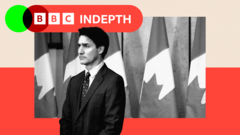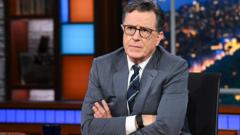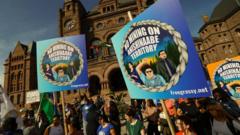This article explores how the combination of housing shortages, escalating rents, and rising immigration levels has led to a national debate over immigration policies and their consequences for Canadians.
The Canadian Immigration Crisis: Trudeau's Resignation and Growing Controversy

The Canadian Immigration Crisis: Trudeau's Resignation and Growing Controversy
Canada's once harmonious approach to immigration faces a significant challenge, leading to Justin Trudeau's recent resignation amid mounting public discontent.
In a shocking shift, Canada’s immigration landscape, long seen as a model of inclusivity, is now a source of division and unrest. Protests have emerged in cities like Ottawa and Vancouver, claiming that rising immigration rates have exacerbated housing shortages and inflation, contributing to Prime Minister Justin Trudeau's resignation on January 6, following nine years in power.
A striking illustration of the housing crisis can be seen in a tiny rental offering in Brampton, Ontario, where a converted bathroom is listed for just C$550 monthly, a stark contrast to Toronto's average of C$2,261 for a one-bedroom apartment. The housing crisis is reflected in a government report stating that 2.4 million Canadian families live in overcrowded or deteriorating homes.
As inflation tightens its grip, many Canadians are beginning to voice concerns about the country’s immigration system. A recent survey revealed that 58% of Canadians now believe that too many immigrants are entering the country, a dramatic increase from 27% in 2022. This signifies a pivotal change in public perception, revealing a once-taboo topic gaining widespread attention.
Undoubtedly, Trudeau's liberal immigration policies, which prioritized an influx of newcomers post-pandemic, have drawn scrutiny. Between 2013 and 2023, refugee applicants surged from 10,365 to 143,770, significantly impacting the nation's demographic landscape. According to insights from political experts, immigration may not be the sole reason for Trudeau's exit, but it certainly contributed to the growing unease among voters.
As Trudeau stepped down, speculation arose over his potential successor, with the Conservative Party, led by Pierre Poilievre, currently favored in polls. Poilievre has shifted his rhetoric, advocating for reduced immigration to align with housing construction. Experts warn that Donald Trump’s potential return to the U.S. presidency could exacerbate these tensions, similar to the immigration spikes experienced previously under his leadership.
The shared border experience between Canada and the U.S., which spans nearly 9,000 kilometers, creates a unique dynamic. Canadian authorities have beefed up border security measures in anticipation of increased migrant crossings amidst Trump's anticipated policies. The Canadian government has allocated C$1.3 billion for enhanced border control following the tightening of regulations in a recent agreement with the U.S.
Despite the rising sentiments against immigration, some argue that the focus on newcomers distracts from the deeper issues that have accumulated over the decades. Critics, including Toronto Mayor Olivia Chow, remind citizens that the housing crisis stems from a lack of affordable housing construction and political inaction.
As Trudeau unveiled plans for a 20% reduction in immigration targets, concerns remain about whether this will be sufficient to quell the growing dissatisfaction within the Canadian populace. Observers note that the balance between welcoming newcomers and ensuring adequate infrastructure and services is precarious.
While concern over immigration surges in public discourse, the essence of Canada as a multicultural nation remains strong among many citizens. The narrative may be shifting, but the governmental strategies and political sentiments surrounding immigration will likely play a crucial role in the country’s future, especially leading into the next election cycle.
The discussion surrounding immigration in Canada will be heavily influenced by how political leaders navigate public concerns while ensuring that the nation retains its commitment to diversity and inclusion.



















